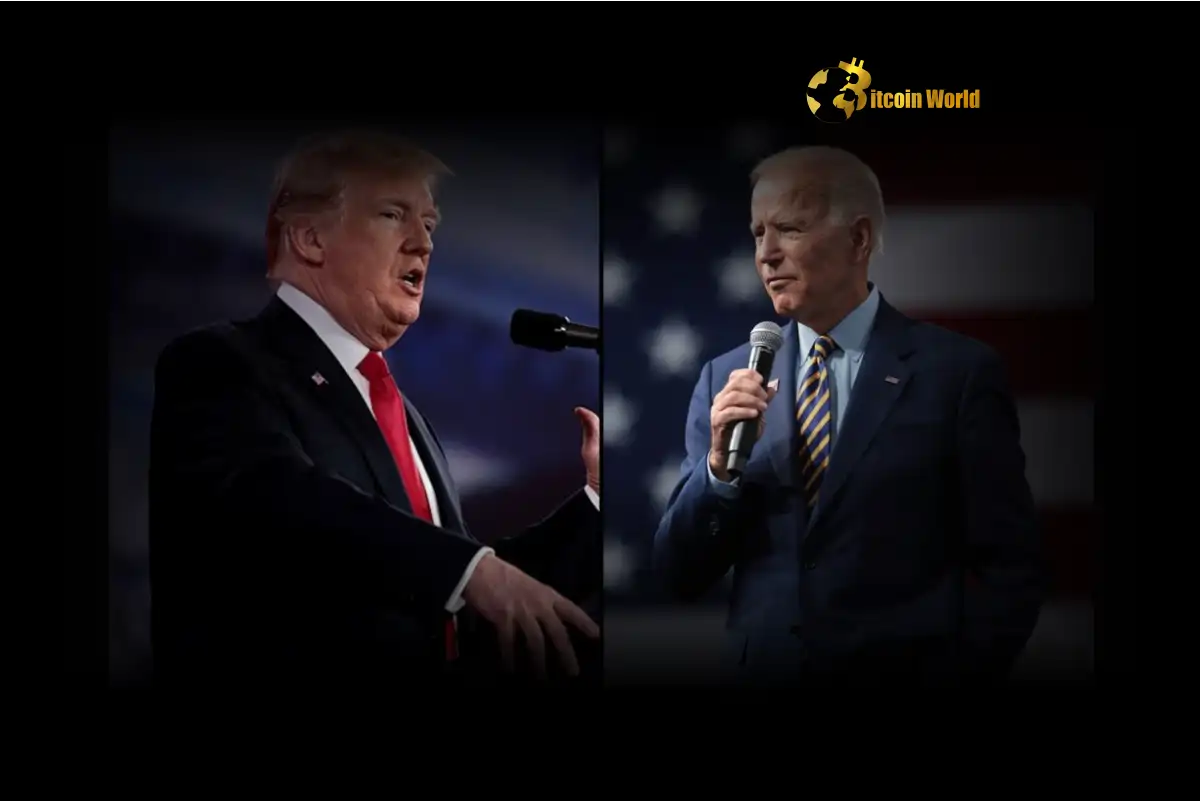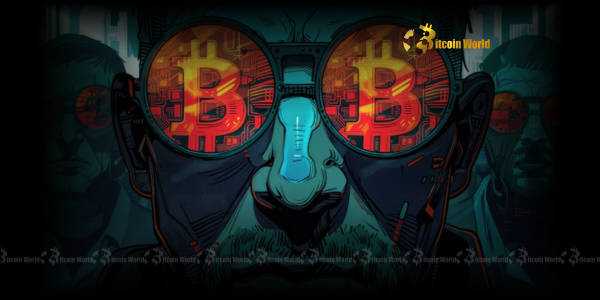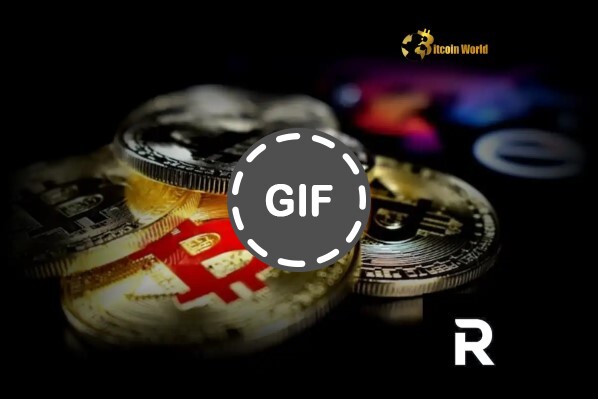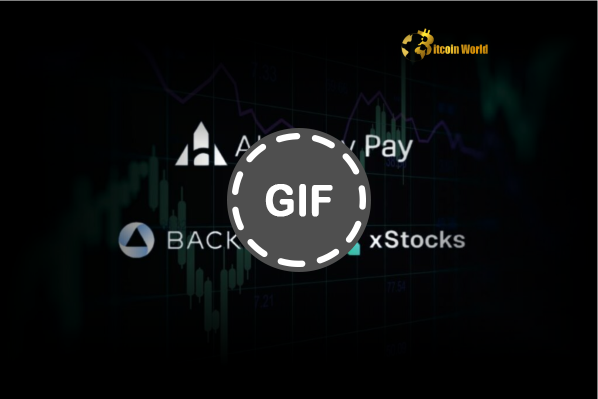BitcoinWorld

Polish Zloty’s Pivotal Plunge: NBP Eyes Rate Cuts Amid Economic Data Shifts
In the dynamic world of global finance, where market movements can ripple across continents, even cryptocurrency enthusiasts keep a keen eye on traditional currency shifts. The recent weakening of the Polish Zloty has captured attention, signaling a significant shift in Poland’s economic landscape and prompting the National Bank of Poland (NBP) to reconsider its monetary policy. For those accustomed to the volatility of digital assets, understanding the drivers behind such traditional currency movements can offer valuable insights into broader market dynamics and the intricate dance between economic data and central bank decisions.
What’s Behind the Polish Zloty Weakening? Decoding the Economic Signals
The recent depreciation of the Polish Zloty is not an isolated event but rather a consequence of a confluence of economic factors. For months, Poland, like many other nations, has grappled with persistent inflation. However, recent data has indicated a notable deceleration in price growth, alongside signs of a cooling economy. This shift in economic indicators is the primary catalyst for the NBP’s evolving stance on interest rates.
To fully grasp the situation, let’s examine the key economic signals influencing the Zloty’s performance:
- Inflation Deceleration: After peaking at double-digit figures, Poland’s Consumer Price Index (CPI) has shown a consistent downward trend. While inflation remains above the NBP’s target, the pace of its decline has surprised many analysts. Lower inflation reduces the pressure on the central bank to maintain high interest rates.
- Slowing Economic Growth: Alongside falling inflation, Poland’s Gross Domestic Product (GDP) growth has softened. Factors such as tighter financial conditions, reduced consumer spending, and a slowdown in the Eurozone, Poland’s main trading partner, have contributed to this deceleration. A weaker growth outlook typically encourages central banks to adopt more accommodative policies.
- Real Interest Rates: With inflation falling faster than nominal interest rates, real interest rates (nominal rate minus inflation) have been rising. Higher real rates can dampen economic activity, making rate cuts more appealing for policymakers aiming to stimulate growth.
Consider the following snapshot of recent economic data that has been influencing the market’s perception of the Zloty:
| Economic Indicator | Recent Reading | Previous Reading | Implication for NBP |
|---|---|---|---|
| CPI Inflation (YoY) | ~6.1% | ~10.1% | Reduced pressure for rate hikes, opens door for cuts |
| GDP Growth (YoY) | ~0.5% | ~2.0% | Signals economic slowdown, supports stimulus via cuts |
| Industrial Production (YoY) | ~-2.5% | ~-1.5% | Weakening manufacturing sector, needs support |
| Unemployment Rate | ~5.0% | ~5.0% | Stable, but potential for deterioration with slower growth |
These figures paint a clear picture: the Polish economy is cooling, and inflationary pressures, while still present, are easing. This macroeconomic backdrop is crucial for understanding the NBP’s current dilemma.
NBP Interest Rates: A Pivotal Policy Shift on the Horizon?
The National Bank of Poland (NBP) has maintained a relatively hawkish stance for an extended period, hiking NBP Interest Rates to combat soaring inflation. However, the recent economic data has put the central bank at a pivotal crossroads. The market is now increasingly pricing in the likelihood of rate cuts, a significant reversal from the tightening cycle that characterized the past two years.
Why is the NBP considering this shift? The central bank’s primary mandate is price stability, but it also considers economic growth. When inflation was rampant, the focus was solely on tightening. Now, with inflation showing signs of moderation and the economy slowing, the balance shifts. Policymakers are faced with a complex decision:
- Balancing Act: Continue fighting inflation aggressively by keeping rates high, risking a deeper economic slowdown, or pivot to support growth with rate cuts, potentially reigniting inflationary pressures.
- Forward Guidance: The NBP’s communication has become increasingly dovish. Recent statements from Governor Adam Glapiński and other Monetary Policy Council (MPC) members have hinted at the possibility of rate reductions sooner than previously anticipated. Such forward guidance can itself influence market expectations and currency movements.
- Real Wage Growth: While nominal wages have risen, high inflation has eroded real purchasing power. Rate cuts could stimulate consumption and investment, helping to boost real wages and support domestic demand.
The potential for a rate cut by the NBP has immediate implications for the Zloty. Lower interest rates typically make a currency less attractive to foreign investors seeking higher returns, leading to capital outflows and currency depreciation. This expectation has already contributed to the Polish Zloty‘s recent weakening.
Understanding Poland Economic Outlook: Beyond Domestic Factors
While domestic economic data and NBP policy are primary drivers, the broader Poland Economic Outlook is also shaped by external factors. Poland is deeply integrated into the European Union’s economy, making it susceptible to developments in the Eurozone and global markets.
Key external influences on Poland’s economy include:
- Eurozone Performance: As a major trading partner, the health of the Eurozone economy directly impacts Polish exports and industrial output. A slowdown in Germany or the broader Euro area can dampen demand for Polish goods and services.
- EU Funds: Poland is a significant recipient of EU structural and cohesion funds. Delays or disputes over the disbursement of these funds can create uncertainty and impact investment, affecting the long-term economic outlook.
- Energy Prices: Despite recent declines, energy prices remain a concern. Poland’s reliance on imported energy, particularly natural gas, makes its economy vulnerable to global energy market volatility, which can feed into inflation and impact industrial costs.
- Geopolitical Landscape: The ongoing conflict in Ukraine continues to cast a shadow over regional stability. While Poland has shown resilience, the proximity to the conflict zone can deter foreign investment and influence risk perception among international investors, affecting the Zloty Forecast.
The interplay of these domestic and international factors creates a complex environment for Poland’s economy. The NBP’s decisions are not made in a vacuum but must consider this intricate web of influences.
Zloty Forecast: Navigating the Uncertainty Ahead
Given the shifting economic landscape and the NBP’s evolving stance, what does the Zloty Forecast look like? Predicting currency movements is inherently challenging, but analysts are weighing various scenarios based on the likelihood of NBP rate cuts and broader economic trends.
Several factors will be critical in determining the Zloty’s trajectory:
- Pace and Depth of NBP Cuts: If the NBP opts for aggressive and rapid rate cuts, the Zloty could face further significant depreciation. Conversely, a more cautious approach, with smaller, incremental cuts, might lead to a more gradual weakening or even stabilization.
- Inflation Trajectory: Should inflation surprise on the upside again, the NBP might pause or reverse its dovish stance, potentially providing some support to the Zloty. However, if inflation continues to fall rapidly, it reinforces the case for cuts.
- Global Risk Appetite: In times of global uncertainty, investors tend to flock to safe-haven currencies. If global risk appetite improves, emerging market currencies like the Zloty might find support, provided domestic fundamentals are stable.
- EU Fund Disbursement: Positive news regarding the release of EU recovery funds for Poland could significantly boost investor confidence and provide a tailwind for the Zloty.
Analysts’ consensus suggests continued near-term pressure on the Polish Zloty, particularly if the NBP delivers on market expectations of rate cuts. However, the medium-to-long term outlook could see stabilization or even appreciation if Poland’s economy achieves a soft landing, inflation is brought under control, and EU funds begin to flow consistently.
Central Bank Policy and Investor Strategies: What Should You Consider?
The anticipated shift in Central Bank Policy by the NBP has significant implications for investors, both local and international. Understanding how these changes might affect various asset classes is crucial for informed decision-making.
Here are some actionable insights for investors:
- Forex Market Volatility: Traders in the forex market should prepare for increased volatility in the EUR/PLN and USD/PLN pairs. Short-term speculative opportunities might arise from NBP announcements or economic data releases. Risk management, including stop-loss orders, becomes even more critical.
- Bond Market: Lower interest rates generally lead to higher bond prices. Polish government bonds (Treasuries) could see increased demand, especially if real yields remain attractive. Investors might consider extending duration in their bond portfolios.
- Equity Market: Rate cuts can be a mixed bag for equities. While lower borrowing costs can boost corporate profits and stimulate economic activity, a weakening currency can increase import costs for some businesses. Export-oriented companies might benefit from a weaker Zloty, making their products more competitive abroad.
- Real Estate: Lower mortgage rates resulting from NBP cuts could stimulate the housing market, making real estate more affordable and potentially boosting demand.
- Diversification: Given the uncertainty, diversification across different asset classes and geographies remains a prudent strategy. Investors might consider exposure to other emerging markets or global assets that are less sensitive to Polish economic developments.
- Monitor NBP Communications: Pay close attention to official statements, minutes from MPC meetings, and speeches by NBP officials. These communications often provide clues about the central bank’s future intentions.
For those in the cryptocurrency space, understanding these traditional market dynamics is equally vital. Major currency shifts can influence global liquidity, risk appetite, and the flow of capital, which indirectly impacts the broader digital asset ecosystem. A weaker Zloty might, for instance, lead some Polish investors to seek alternative stores of value, including cryptocurrencies, though this is a more complex correlation.
Challenges and Opportunities for Poland
The current economic juncture presents both challenges and opportunities for Poland.
Challenges:
- Persistent Inflationary Pressures: While decelerating, inflation remains elevated, posing a risk of second-round effects if not managed carefully.
- Global Economic Slowdown: A protracted slowdown in key trading partners could dampen Poland’s export-driven growth.
- Geopolitical Risks: The ongoing war in Ukraine continues to be a source of uncertainty, impacting investor sentiment and potentially disrupting supply chains.
- Fiscal Policy: Government spending and fiscal discipline will play a crucial role in complementing monetary policy and ensuring macroeconomic stability.
Opportunities:
- EU Recovery Funds: The eventual unlocking of substantial EU recovery funds could provide a significant boost to public and private investment, driving economic growth.
- Resilient Domestic Demand: Despite challenges, Poland’s domestic market has shown resilience, which can act as a buffer against external shocks.
- Skilled Workforce: Poland’s relatively skilled and competitive workforce continues to attract foreign direct investment in various sectors.
- Energy Transition: Investment in renewable energy and energy efficiency could reduce reliance on volatile fossil fuel imports and enhance energy security.
Conclusion: A Delicate Balancing Act for the Polish Zloty
The weakening of the Polish Zloty is a direct reflection of a significant shift in Poland’s economic narrative. With inflation showing signs of cooling and economic growth moderating, the National Bank of Poland is increasingly leaning towards interest rate cuts. This pivotal policy shift, aimed at supporting economic activity, carries inherent risks for the currency, potentially leading to further depreciation in the short term. However, the long-term Zloty Forecast will depend on the NBP’s ability to navigate this delicate balancing act, successfully taming inflation without stifling growth, and on the broader global economic environment. For investors and market observers, a keen eye on incoming economic data, NBP communications, and geopolitical developments will be essential to anticipate the next moves of the Polish Zloty and the broader Poland Economic Outlook. The coming months will be crucial in determining whether Poland achieves a soft landing or faces a more challenging period of adjustment, making the Central Bank Policy decisions paramount.
To learn more about the latest Forex market trends, explore our article on key developments shaping interest rates and their impact on global liquidity.
This post Polish Zloty’s Pivotal Plunge: NBP Eyes Rate Cuts Amid Economic Data Shifts first appeared on BitcoinWorld and is written by Editorial Team





